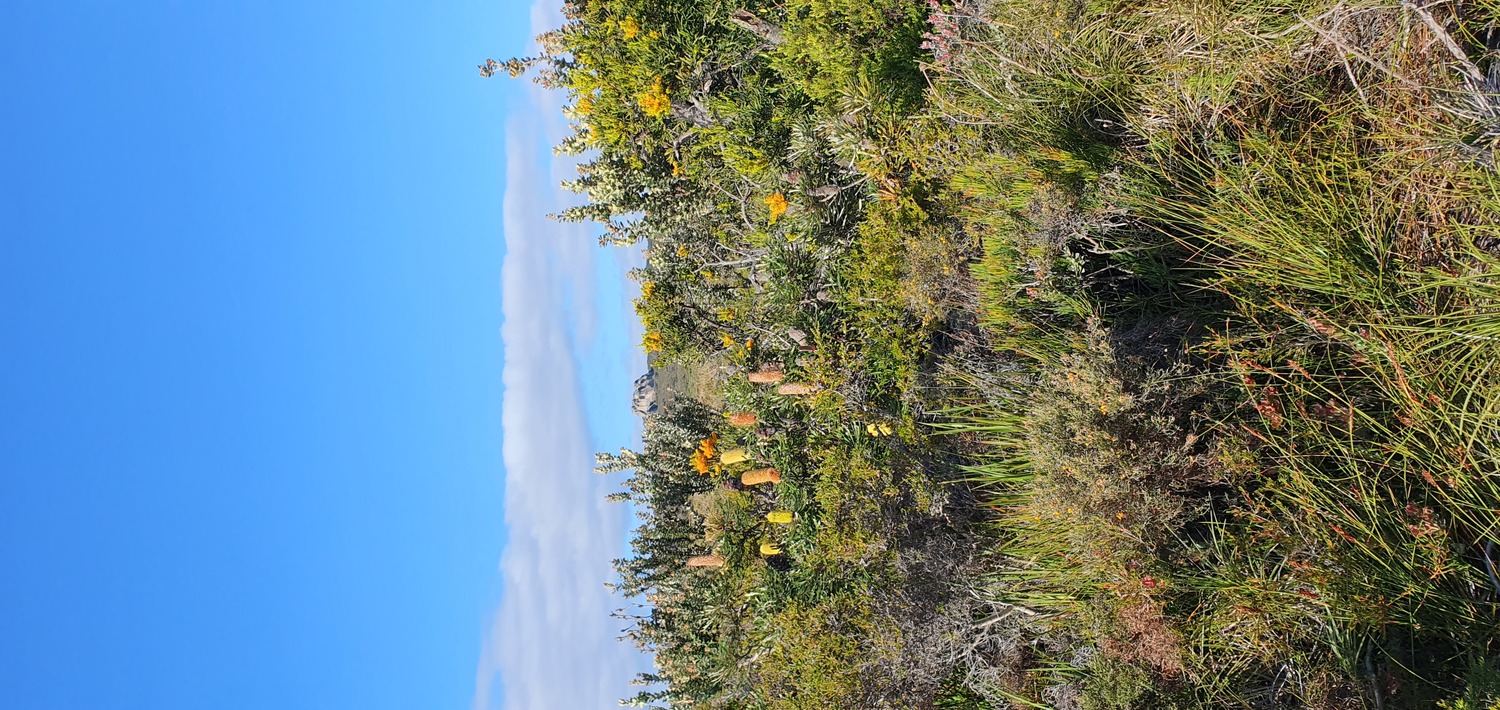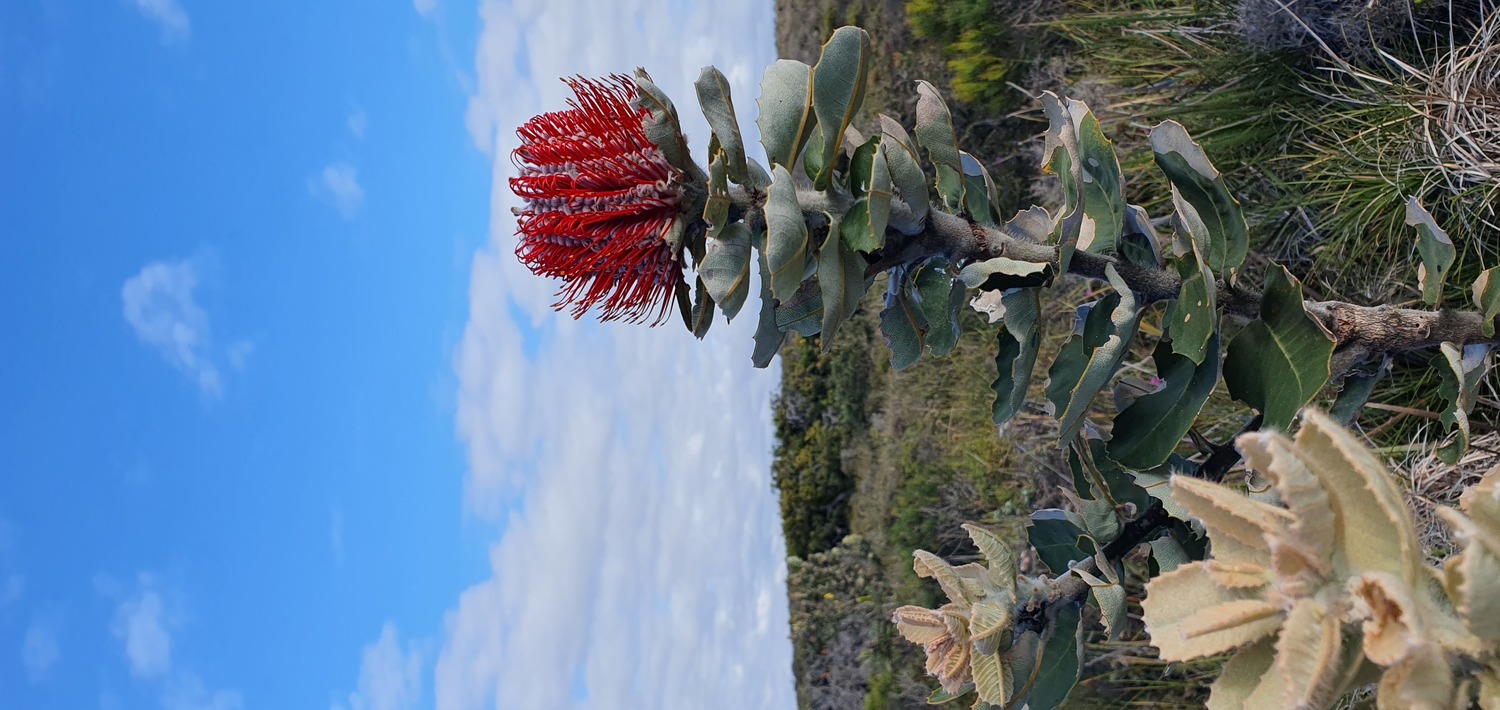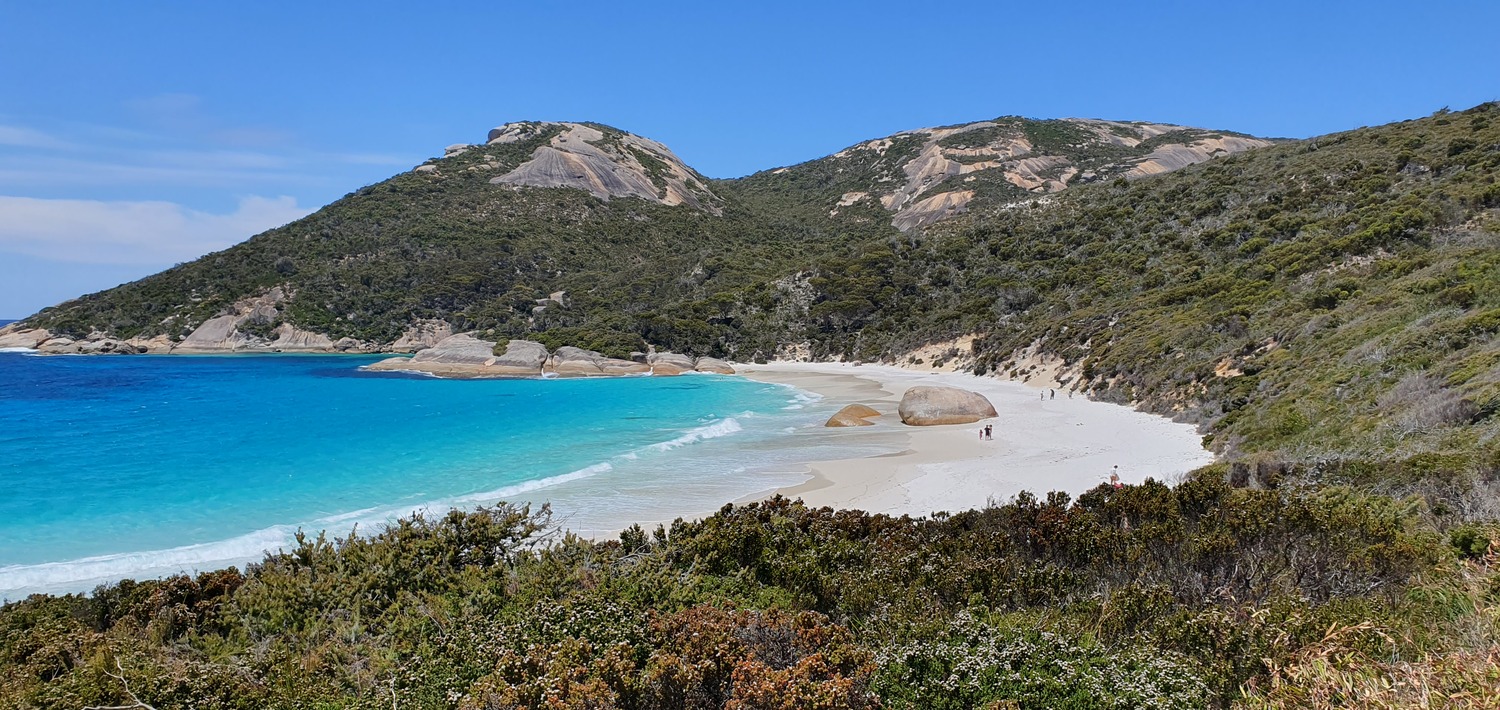Twenty-eight years ago – quite literally, half a life-time – I brought Nikki to WA for a holiday. We’d been together for about six months.
About a year earlier, in early 1994, I began my birding journey. I was back in Perth for brother Tim’s wedding, and armed with a cheap pair of Olympus porro-prisms I charged about to various spots described in Ron Van Delft’s “Birding Sites Around Perth” hoping to grip off PhD housemate, close friend and lifelong birder, SMR Young. I not only succeeded in gripping off Steve, I discovered that birding added multiple dimensions to my experience of Australia and the bush; suddenly I was outdoors in the cool early am, immersed in the emptiness and wildness, smelling the heady eucalyptus oil, hearing the dawn chorus and properly appreciating the nature in many of my childhood haunts for the first time. Either side of Tim’s wedding, despite my inexperience, I saw more than 100 species including most of the SW endemics. Steve was gripped. But I was hooked.
Perhaps it was true love already, or perhaps just not realising what she was getting into, in our early months together Nikki tolerated my birding (up to a point). On that trip in summer ’94/’95 as we toured around the south-west, I managed to persuade her to drive from Albany to a place called Two People’s Bay. As a naïve, new birder, I imagined we could rock up there one afternoon and find Noisy Scrub-bird, a small brown bird that is restricted to a tiny stretch of coastal heathland east of Albany. It was one of the few endemics I had not seen when making my debut in the birding world 12 months earlier. NSB, is however, not only rare, it is also a bastard skulker, almost impossible to glimpse, even for experienced birders with excellent gen and field-craft. A dude with inadequate optics, rocking up late afternoon with non-birding girlfriend was always doomed to fail.
Fast-forward that half-lifetime and we were remarkably/amazingly/wonderfully (delete as appropriate) still a couple, and once again touring the south-west. This time we were in a campervan in the week before Christmas 2022, with grown-up daughters who are still very happy to come on holiday with us. Maybe I’m kidding myself that we all love each others’ company still, but maybe it’s just that a holiday at Dad’s expense is too good to pass up. Whatever the reality, on this occasion it was Louisa who had chosen the destination, lured by insta-images of the incredible beaches on the south coast, especially near Esperance.
Rather than drive all the way down to Esperance in one go, we stayed over one night at Stirling Range Retreat. I actually wasn’t feeling too well, so was grateful that Erica was happy to share the driving and we were only doing 4, instead of 7.5 hours on the road. The campsite itself was quiet and beautiful; I searched slightly half-heartedly (and unsuccessfully) for Western Shrike-tit the next morning and I would later regret that I’d not put in more effort. But this was the first day of the holiday. I didn’t want it to leak out too quickly that I’d been encouraging Louisa’s holiday choice because I had my own agenda. I had more important fish to fry in a couple of days.


The walk up Bluff Knoll, SW WA’s highest peak is only a few km from Stirling Range Retreat and we headed there the next morning. I would love to have walked to the top, but we didn’t really have time with another 4 hours of driving ahead of us, and in any case I was still not right (it felt like covid but my RAT said otherwise). We walked about a 1/3 of the way up, enjoying the peaceful and amazing views of the mountain ahead and the plains to the north.




Once again sharing the driving with Erica, we arrived in Esperance early evening to begin a wonderful few days. Despite having grown up holidaying in similar places further west, I had never been this far east. The scenery is superb, and I was still blown away by the beauty of it; I have never seen bluer water or whiter sand than the incredible beaches in Cape Le Grand NP. It delivered on all fronts for the girls; scenery, sunbathing, tasty pub-meals and prosecco in the evening. A particular highlight was breakfast at Lucky Bay. I was too late to book the excellent national park campsite at Lucky Bay itself (Erica had suggested it but I didn’t get my act together in time — sorry Eri!), so we stayed in Esperance, which did have the distinct advantage of a convenient pub in evenings, but I persuaded the family of the virtue of a rare early rise and drive to the national park. We cooked bacon and eggs at Lucky Bay as the sun rose, looking out over the pure white sand, turquoise water, and kangaroos in the carpark and even on the beach. The walk from here through the coastal heath to Thistle Cove provided many more photographic highlights, but our personal favourite beach was Hellfire Bay, despite the presence of a “friendly” Dugite.











It was five hours drive from Esperance back to Cheynes Beach where we would spend the next two nights. Now, after 28 years, I was back in that small section of coastline where Noisy Scrub-bird persists, and this time I was better prepared: more experience, better optics and crucially, excellent gen from Frank O’Connor. As we cooked dinner that evening, the songs of both Noisy Scrub-bird and Black-throated Whipbird drifted tantalisingly over the heath behind the caravan park, only a few metres from our camp.
No daylight savings in WA means first light this close to summer solstice is at 4.30am, ridiculously early, but with the great advantage that I could now get 4 hours of birding in before anyone else would even be rousing themselves for the day. And all the key habitat and birds are walking distance! I strolled down to a small track that leads to the beach where Frank, and the Caravan Park people (who are very used to birders coming here) had told me to watch where NSB often breaks its preferred dense cover to cross. This is the best, and for some only way to see this notorious skulker. In fact, it’s been the technique for more than 20 years and most of my birding mates/acquaintances in Australia have seen it this way. Almost immediately I heard the piercing, distinctive song of NSB but it was some way off. Frank had advised to wait, even if it sounded distant, because often you can hear the male singing some way away, but a female or young bird will nip across the track. But I’m not a very patient birder or photographer. I much prefer to be doing something, walking somewhere, actively finding stuff; sitting and waiting is not my style. So after a while I disregarded Frank’s advice and walked further along the main road to the point. Although I could hear a Whipbird calling in the heath behind me, I refused to be distracted and followed the NSB songs, but it was clear that the scrub was impenetrable and sitting and waiting was my only option. Eventually I found myself back at the track to the beach.
I stood for a few minutes at the top of the track contemplating my next move and whether I should, contrary to my nature, follow the advice and tried-and-tested method, and settle in for a vigil. Then, still umm-ing and ah-ing about my next move, I noticed a tiny flick of movement about 20m away on the right of the track. Before I could go for binoculars a smallish brownish bird with a white throat and cocked tail dashed across like a mouse-sized version of a roadrunner to the other side and disappeared into dense scrub. It was all over in about 2 seconds. You f*$#ing beauty — I finally had laid eyes on a Noisy Scrub-bird after 28 years!!!! I punched the air with delight and relief, then looked at my watch. It was about 7am, so I still had some more time to explore.
A hundred metres closer to the caravan park, right opposite the turnoff to the park, the NSB had scurried from where I’d seen it flash across the track, now to some dense, low mallee bushes right next to the road. It was so close that I felt sure that all I had to do was wait and I would get an outstanding view. But after another 15 minutes when it called regularly but refused to break cover, it started to move away again. I decided to use my final hour before breakfast up on the heath.
A large flock of Carnaby’s Black-Cockatoos was wailing as they drifted about the heathland looking for suitable banksia to eat. I probably walked 2-3km along the sand tracks, listening out for any of the three skulkers, Noisy Scrub-bird, Western Whipbird and Western Bristlebird. I heard what I thought were snatches of Bristlebird (not one I needed, but that’s a different story), and Whipbird but saw neither.
Near the top of a large dune a pair of close-sounding NSB singing to each other encouraged me to walk 20-30m into the heath away from the track and crouch low down. As they called to each other I tried to distract the closer bird with some pishing. It seemed to come a little closer, to the base of a leaning banksia about 10m in front of me, then suddenly it appeared in a low fork. I was ready with binoculars and had an excellent view, now able to take in the plumage detail (not that it’s very interesting) in a way that had been impossible down at the beach track. I held the view in binoculars, resisting the urge to go for camera, because I fully expected it to disappear any second as soon as it worked out that the alarm calls were coming from a hairy dude with bins and camera, and not some other bird. Countless times in the past going for the camera is the signal for the bird to slip away. Sometimes they even wait until your device gets focus lock before sliding out of view; they also seem to be able to anticipate exactly those few milliseconds between focus lock and full shutter press. Like migration, perhaps there are unexplained mechanisms using electro-magnetic fields or quantum entanglement? This time the bird stayed long enough that maybe I could have got a great image, but as I have said many times on this blog, I am a birder first, photographer second, so I reasoned with myself that I had done the right thing. I positively bounded back down the track to the van, where I was just in time for a morning cuppa and some bacon and eggs. What a great morning!



















After brekkie we drove to 60km to Two People’s Bay. This is famed as the site where Noisy Scrub-bird was rediscovered in the 60s, having been supposed extinct. It was also the site of the dip mentioned at the start of his blog! But today this was not a birding visit. Little Beach at Two People’s Bay is yet another achingly beautiful beach and we sun-bathed and swam until it was time to head back to Cheynes for a nanna-nap.


The long days at this time of year meant I even had time for some more birding. While dinner cooked, I walked back up the bitumen for a km or so and managed to track down an obliging Black-throated Whipbird which wonderfully decided to sing from the tops of various bushes.

The following morning, I forced myself to get up and about again for first light, and this time I was disciplined to wait at the beach track. This time I was ready and as soon as I saw any movement I raised my camera and started shooting, hoping that the autofocus would do its job. Once again it was all over in than a few seconds, but the R6 can shoot at 12fps in mechanical shutter mode. With my fingered pressed and it firing away I swept the camera right to left hoping to catch up with the bird, managing about 8-9 shots before it dived into cover of the left-hand side of the track — less than a second’s worth. When I inspected them afterwards, I had a lot of empty frames until the moment it is about to disappear. A motion-blurred “speedy-gonzalez”, small brown job is squeezed into the far left hand side of the frame as I managed to catch up with it in the nick of time. Here’s that record shot:


The rest of the day we made our way to the Porongorups via Albany, checking out The Gap and the Natural Bridge en route. Since the early 1980s when I last went to the The Gap, the tourist infrastructure has been considerably upgraded, with an impressive and aesthetically sympathetic viewing platform suspended over the cliff for an amazing viewing experience.

Mid-afternoon we checked in to the Porongorup Range Tourist Park. Nikki and I had camped here nearly 30 years earlier, when it was basically just a field, but over the intervening three decades it has been considerably upgraded. It has an excellent camp kitchen, beds of wildflowers adding colour and attracting honeyeaters and fairywrens, and friendly proprietors who left the rat-race in New York for a quiet life in WA’s south west.



Late afternoon we went looking for wineries. We’d noticed a couple on our way to the campsite, but were disappointed that they’d all closed for the day since we drove in an hour earlier. Instead we found ourselves at the car-park at the base of the Porongorups. Nikki and Lou were looking for something unchallenging, so walked a short, pretty loop through the forest at the base of the hills, and had a cup of tea back at the van. Erica and I, meanwhile, took the steep(ish) trail to Castle Rock at the top of where the Granite Skyway, another beautifully designed and impressive engineering feat, allows 360 views over the Karri Forest.









We headed back to Perth the next day, 23rd Dec, just in time for Christmas with the family. And that was it for birding over the summer holidays. Well, almost. I did sneak away one afternoon for yet another attempt to see the regularly returning Eurasian Hobby at North Lake (but I dipped… again).


